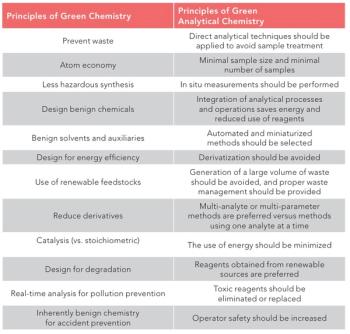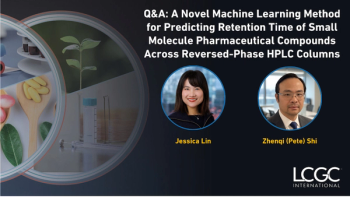
Best of the Week: Analytical Chemistry Job Market, Two-Dimensional GC, and More
Here are the top five articles published on LCGC International this week.
This week, LCGC International published a variety of articles on the hottest topics in chromatography and beyond. Below, we’ve highlighted some of the most popular articles, according to our readers. Happy reading!
Jean-Marie Dimandja, Jeffrey Archer, John Casanova, Eric Posenecker, Pierre-Hugues Stefanuto, Jean-François Focant, Daniel Struk, Peter Hesketh, Christopher Heisst, Catherine Rimmer
One-dimensional gas chromatography (1D-GC) stationary phases are generally classified according to their relative polarity into non-polar, semi-polar, and polar columns. In comprehensive two-dimensional gas chromatography (GC×GC), it is the polarity difference between the two tandem-assembled stationary phases that determines the selectivity of the column ensemble. In this work, the scientists present a normalized approach to GC×GC column set characterization that is based on the use of a reference mixture of standards called the Century Mix. The Century Mix contains 100 chemical probes of different functionalities that span a reasonable range of volatilities and polarities to capture the selectivity profile of any GC×GC column set.
Fuh-Rong Tsay, Derek Henderson, Fatima Naser Aldine, Dwight R. Stoll, Imad A. Haidar Ahmad
Liquid chromatography (LC) can be used to isolate compounds of interest from mixtures for further analysis, using techniques such as mass spectrometry and nuclear magnetic resonance (NMR). The conditions of such isolation methods can lead to degradation of the isolated compounds of interest, which is obviously a major problem if a goal of the isolation is to identify the compound of interest. In this installment of “LC Troubleshooting,” Dwight Stoll and his fellow scientists discuss strategies that can be used to minimize the likelihood of compound degradation in the isolation process.
Aaron Acevedo
Many successful peopleseek out the help of different mentors throughout their careers. The vast majority (92%) of Fortune 500 companies have mentorship programs, according to a 2023 report from MentorcliQ (1), which also noted that ompanies with mentoring programs increased their headcounts by approximately 4%, compared to an average headcount decrease of 33% for companies without these programs. Recently, the editors of LCGC International asked separation scientists at a variety of different points throughout their careers to share their experience with mentorship. In this article, you’ll find advice from Elizabeth Neumann of the University of California, Davis; Emanuela Gionfriddo of the University at Buffalo; Bob Pirok of the University of Amsterdam; Ronald E. Majors, a consultant and formerly of Agilent Technologies; Michael D. McGinley of California State University, Long Beach; and Jim Grinias of Rowan University, on how to be an effective mentor and where to find a mentor at any stage in your career.
Will Wetzel
The market for analyticalchemists remains strong despite the current ongoing challenges in the broader labor market. Jobs in chemistry and material scientists are projected to see 6% growth through 2032, higher than average, according to the Bureau of Labor Statistics (BLS). Further, according to BLS, there will be approximately 7200 job openings for chemists and materials scientists per year during this period of time. However, despite all these positive trends, analytical chemists, and workers in general, are dealing with a unique set of challenges in the current marketplace, and it is influencing their salaries, opportunities for advancement, and overall job satisfaction. In this article, the editors of LCGC International dive deep into the latest employment trends and salary data for analytical chemists, providing tips on how employees can find new roles and opportunities at any stage in their career.
John Chasse
According to market research firm Frost & Sullivan, chromatography instruments and modular test equipment are revolutionizing scientific analysis and industrial testing. By enabling precise separation and analysis of complex mixtures, chromatography plays a crucial role in ensuring pharmaceutical purity, food safety, and environmental compliance. As such, with the expanding use of chromatography in pharmaceuticals, especially in drug development and clinical research, coupled with the food and beverage industry’s heavy reliance on chromatography for quality control, is expected to accelerate a chromatography market expansion to $6.60 billion by 2028.
Newsletter
Join the global community of analytical scientists who trust LCGC for insights on the latest techniques, trends, and expert solutions in chromatography.




